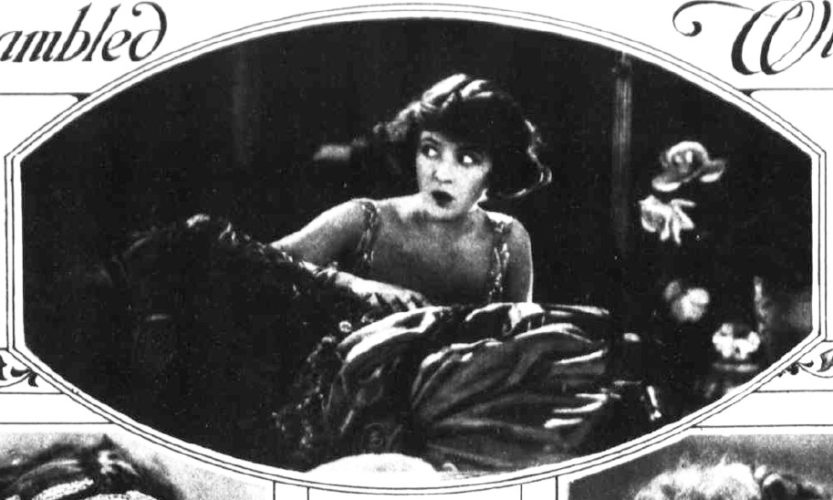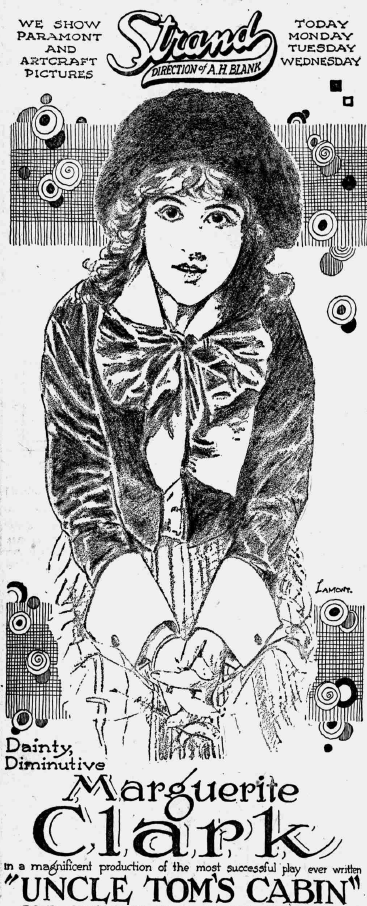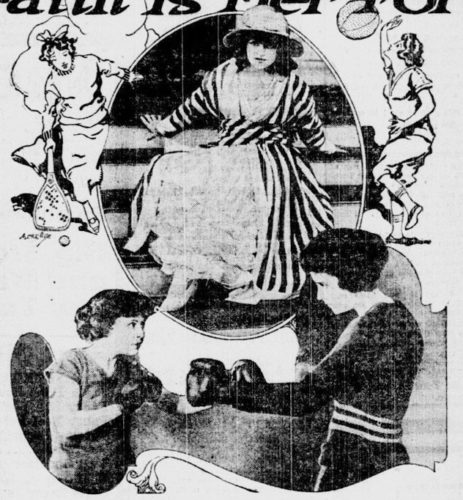“The Popularity of Marguerite Clark”

In honor of the upcoming Oscars, today’s post features Marguerite Clark, star of stage and screen in the early 20th century, of whom it was written: “The popularity of Marguerite Clark is like the popularity of the place where gold is discovered; everybody lights out for it in quick order” (Omaha Daily Bee, August 25, 1918, Image 23, col. 2).

Helen Marguerite Clark was born on February 22, 1883, in the Avondale neighborhood of Cincinnati. She was the third child of Augustus “Gus” James and Helen Elizabeth Clark, coming after sister, Cora, and brother, Clifton. When Clark was not quite ten years old, her mother died, followed three years later by her father, and Cora was named as her legal guardian. One of Cora’s first steps in this role was to remove Clark from the local public school and enroll her in the Ursuline Academy to finish her schooling. In 1899, at the age of sixteen, Clark finished school and decided to pursue a career in the theater.
In 1900, Clark made her debut on Broadway, and in just three years she was performing opposite Broadway star DeWolf Hopper in Mr. Pickwick, where she was described as being “one of the splendid features of the show” (Akron Daily Democrat, November 22, 1902, Image 5, col. 3). In 1909, Clark starred in The Beauty Spot, a whimsical play that would establish her hallmark style roles. The following year Clark was directed by Cecil B. DeMille in The Wishing Ring, and starred in Baby Mine which was produced by the well-known William A. Brady. Two years later, Clark was acting opposite John Barrymore in The Affairs of Anatole.
In 1914 Clark made the shift from stage to screen and signed with Famous Players-Lasky, one of the most famous film distribution companies in the early days of cinema (which later became what we know today as Paramount Pictures, after two name changes). The first film Clark made was the short film Wildflower, followed shortly by The Goose Girl and The Prince and the Pauper. In 1916, Clark starred in Snow White as the titular character, cementing her movie persona. A few years later, Clark starred as Little Eva and Topsy in a film of Uncle Tom’s Cabin.

Clark was known for her “child parts … that present her at the age of twelve” which, in the Lake County Times, she partially credited to having kept herself fit, so she had “all the freshness and spontaneity of the child of that age” (July 20, 1917, Image 9, col. 2). Of the forty films Clark would make over her career, thirty-nine of them were for Famous Players-Lasky. The only film not for the company was Scrambled Wives, which Clark made for her own company, First National Pictures. After Scrambled Wives, Clark retired from acting to live with her husband in New Orleans, Louisiana.
On August 5, 1918, Clark married Harry Palmerston Williams, a New Orleans plantation owner and millionaire businessman. Williams made his money first in his father’s lumber business and then as owner-partner in the Wedell-Williams Air Service Corporation, an airmail service, flying school and Louisiana’s first commercial airline. The couple met while Clark was “touring in the country in the interest of the third liberty loan,” where Williams was also working (Topeka State Journal, July 25, 1918, Image 1, col. 7). Clark and Williams were prominent socialites in New Orleans during their marriage, with Clark serving as acting Tsaritsa for the court at the Duke of Alexis Tableau Ball for Mardi Gras in 1924.
Both partners in Wedell-Williams, Williams and racing pilot Jimmy Wedell, were interested in exhibition flying, race flying and flight training. They supported racers who dominated in the sport for years and set many flying records. Their Model 44 was one of the fastest planes at the time; Wedell set a world speed record in the plane in 1933. Wedell was killed in a flight training accident in 1934, and Williams, too, was killed in a plane crash in 1937, leaving ownership of Wedell-Williams to Clark. Clark sold Wedell-Williams in 1937 and moved to New York City to live with her sister, Cora.
On September 20, 1940, Clark entered LeRoy Sanitarium and died there five days later from pneumonia. She was fifty-seven. A private funeral was held on September 28 at Frank E. Campbell Funeral Chapel. Clark was cremated and buried with her husband. She has a star on the Hollywood Walk of Fame.
Thanks to Bronwyn Benson, Quality Control Technician for the Ohio Digital Newspaper Program, for this week’s post!



Leave a Reply
You must be logged in to post a comment.